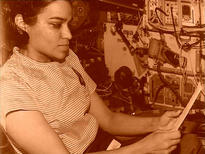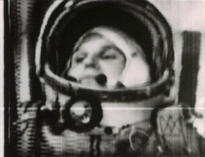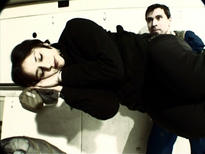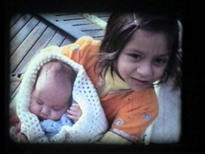OTOLITH I
In 1963, the Russian Valentina Teresjkova was the first woman to orbit around the Earth. After her space flight, she became an icon for global feminism, and in India she shook hands with the feminist Anasuya Gyan-Chand. Historical events like this were the starting point for the cinematic essay ’Otolith I’, made by the Otolith Group in 2003. Set in the year 2013 and in outer space, a character looks back on women of previous generations including Gyan-Chand, Anjalika Sagar (the narrator of the film), and her grandmother. In this fictitious future, twentieth century ways of emancipatory thinking like feminism and socialism, gain new relevance. Temporal shifts between such ideals from the recent past, autobiographical elements and a fictitious future recall Chris Marker’s methods of working in his ’Sans soleil’ (1983), and as in his ’La Jetée’ (1962), the science-fiction in ’Otolith I’ induces a certain melancholy about worlds that are (or will be) behind us or that have not (yet) been realized. Key metaphors in ’Otolith I’ include the title of the film – the otolith is the part of our middle ear that provides us with the ability to maintain our balance – and the phenomena of ’micro-gravity’, which occurs when a body or object is in free-fall. Because the narrator was born in outer space, micro-gravity is the only form of gravity she knows, and her otoliths do not work. As she will never be able to return to earth, the future in which she is living embodies the actual meaning of the term utopia (’no place’). However, in ’Otolith I’ her weightless existence also functions as a metaphor for a renewed optimism.










- Formaat Digital Betacam(Digital Betacam)
- Kleursysteem PAL
- Kleur col.
- Jaar 2003
- Duur 00:22:20
- Taalinfo
Lopende tekst/titels: English UK
Gesproken: English UK
-
Kunstenaars
-
EVENEMENTEN